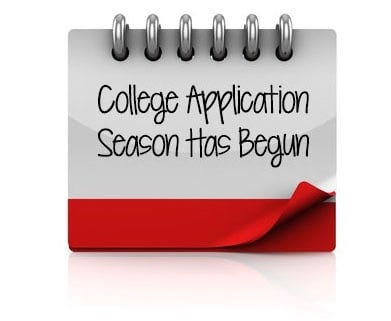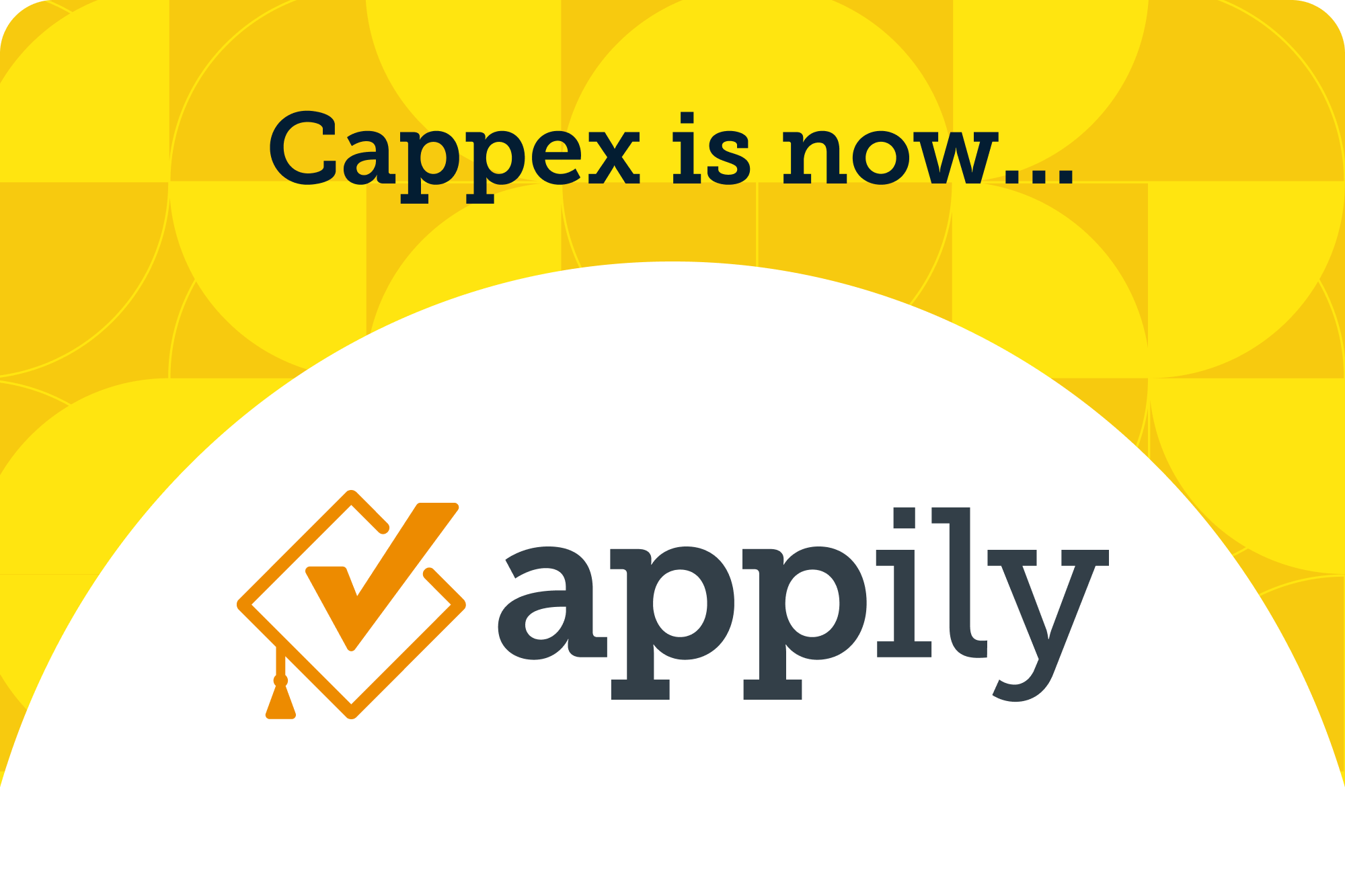Explore web search results related to this domain.
In mid-December, top schools will admit the first members of the Class of 2029 as students receive their much anticipated Early Action and Early Decision results.
In mid-December, top schools will admit the first members of the Class of 2029 as students receive their much anticipated Early Action (EA) and Early Decision (ED) application results.Applying early often provides students a slight edge in the competitive process due to the boost that ED applicants lend to colleges’ matriculation rates. While EA/ED acceptance rates tend to be significantly higher than regular decision acceptance rates, the number of applicants, diversity of applicants’ backgrounds, and the institutional messaging around acceptances are strong indicators of what to expect when Regular Decision results are released next spring.For instance, Vanderbilt’s regular decision acceptance rate shrunk to a mere 3.7% (less than half of what it was a decade ago) during the last admissions cycle; early admissions rates have also fallen significantly at these schools, as Duke saw a 12.9% ED admissions rate in the 2023–24 cycle, compared to 25% in 2013–14 (the school’s regular decision acceptance rate was 4.1% for the Class of 2028).As the Ivy League has entered a transitional phase in the last few admissions cycles amidst wide-ranging criticism, prestigious second-tier institutions have risen in popularity, filling a void caused by the plummeting Ivy League acceptance rates. Universities such as NYU, Vanderbilt, Rice, Emory, Duke, and Northwestern have become significantly more competitive over the last decade—a trend that is likely to continue in both the early and regular decision rounds of this admissions cycle.
Deadlines vary, but applications in this round of admissions are typically due Nov. 1 or Nov. 15, with decisions released four to six weeks later. Read: Avoid These Big College Application Mistakes. While awaiting an early decision admissions decision, students can submit their applications ...
Deadlines vary, but applications in this round of admissions are typically due Nov. 1 or Nov. 15, with decisions released four to six weeks later. Read: Avoid These Big College Application Mistakes. While awaiting an early decision admissions decision, students can submit their applications to other colleges through early action, which is not a binding commitment.Not every college offers early admissions options, and some offer two deadlines for their early rounds: Early Decision I and Early Decision II, or Early Action I and Early Action II."So if a family feels as though they might not qualify for need, but that they are going to desire a merit scholarship as part of their decision-making process, that might be a reason not to apply early decision. Receiving a merit scholarship somewhere else when the student didn't have need is generally not a reason to be released." Early action – which usually has either a November or December deadline – is similar to early decision without the binding agreement.Early decision is a binding commitment, while early action gives students more flexibility in the college decision process.

Early action and early decision let prospective students apply to their first-choice schools sooner than regular applicants. You’ll also receive an admission decision much sooner than you would under regular decision. While the timeline varies, most colleges set November deadlines for early ...
Early action and early decision let prospective students apply to their first-choice schools sooner than regular applicants. You’ll also receive an admission decision much sooner than you would under regular decision. While the timeline varies, most colleges set November deadlines for early action and early decision, and send out decisions around mid-December.What is early action vs. early decision? Learn about the benefits of applying to college early and how to decide between these two admission plans.Applicants receive admission decisions sooner, usually starting in mid-December. You can typically apply to multiple schools under an early action plan.Some schools, like Dartmouth College, have admitted to letting in higher percentages of early decision applicants than regular decision applicants. But other institutions, such as Brown University, claim to use the same admissions criteria for all applicants, regardless of when they apply. A nonbinding option, early action allows students to apply and potentially gain admission to one or more schools much earlier than regular applicants.


View the results for mail-in and early in-person ballots in your state for the 2024 general elections
Early votes continue to roll in from states across the country where voters were able to cast their ballots either in person or via mail. Some states provide details about the early votes that are cast, including partisan divisions and age of voters, as well as voting method.Vice President Kamala Harris’ campaign has pushed for Democratic voters to utilize early voting more aggressively, seen as a tactic to help bank votes ahead of Election Day.While former President Donald Trump has been critical of early voting, his campaign and the Republican Party have also been pushing for voters to cast early ballots.

While dozens of law schools offer early decision, early action is rarer. Only a few law schools offer both options. There is no drawback to applying early action, if you meet the deadline.
Early decision and early action applicants submit their complete applications months before the general application deadline.This step is a serious commitment with many considerations.A few law schools have a later deadline or even a second round. Applying early decision signals to admissions officers that an applicant is so interested in attending their school that he or she is willing to forgo all other applications if accepted.Applying early decision does not require any extra work besides meeting the deadline, which is typically in November.

Explore college application deadlines for popular schools and learn the differences between Early Action, Early Decision, & Regular Decision.
University of Georgia – Early Action: Oct. 15, Regular Decision: Jan. 1. The University of Texas at Dallas (UT Dallas) – Priority Deadline: Dec 1, Regular Decision: May 1.University of Oklahoma (OU) – Early Action: Nov. 1, For consideration for scholarships: Dec. 15, Regular Decision: Feb. 1. Texas Tech University – Early Decision and scholarship consideration: Dec. 1. Admission and scholarship applications will continue to be accepted after the deadline, with an August 1 end date.Purdue University – Early Action: Nov. 1, Regular Decision: Jan. 15. Loyola University-Chicago – Priority Deadline: Dec. 1, Merit Scholarship Consideration: Feb.Indiana University-Bloomington – Early Action: Nov. 1, Regular Decision: Feb. 1. Oklahoma State University – Rolling admission. Apply by Nov. 1 for Early Opportunity Scholarship consideration. The scholarship consideration hard deadline is Feb.
Schools with early action admission usually contact applicants with their decision sometime between December 1 and January 31. However, there are some colleges that wait until mid-February to let applicants know if they got in. ... There are more than 300 schools that offer an early action ...
Other schools have their early decision application deadline set in mid-November or even later on December 1. Colleges with a November 1 deadline usually send a response to applicants sometime in December. ... Generally, early action applications are due in the month of November.Submit any early decision or early action applications due in November by the college deadline.Get the key information and dates you need if you're planning to apply to college early decision or early action.Schools with early action admission usually contact applicants with their decision sometime between December 1 and January 31. However, there are some colleges that wait until mid-February to let applicants know if they got in. ... There are more than 300 schools that offer an early action admission option, including public and private universities.

Most schools allow you to apply early in one of two ways: early decision or early action. Early decision is binding. This means if you are accepted through early decision, you are committed to attending that school, and will withdraw any applications you may have submitted for the regular deadlines ...
Most schools allow you to apply early in one of two ways: early decision or early action. Early decision is binding. This means if you are accepted through early decision, you are committed to attending that school, and will withdraw any applications you may have submitted for the regular deadlines at other schools.Early decision deadlines are often in November, and students are typically notified of the decision in December. Early action is non–binding. This means you are not bound to attend if you are accepted. You may also apply early action to multiple colleges.The obvious advantage of early action over early decision is the opportunity it gives you to apply to, and ultimately compare financial aid packages from several schools. If you are accepted early decision, you risk missing the admission deadlines of other schools while you wait for your award package to arrive.If you’re sure that you’ve found your best-fit school, you know it’s one you want to attend, you’re a strong candidate for admission, and you know that you can afford the tuition, go ahead and apply early decision. That is a whole lot of research and comparison to have done by fall of your senior year, though, and if you’re uncertain about any of those factors, you’re not alone! Keep your options open by applying early action, or by the regular deadline.

Generally, colleges will notify Early 1 students by the end of December and Early 2 as late as February. Both allow ample time for decision making before the May 1 decision deadline. Your counselor can help you determine whether applying Early Action or Early Decision at your top college is ...
Generally, colleges will notify Early 1 students by the end of December and Early 2 as late as February. Both allow ample time for decision making before the May 1 decision deadline. Your counselor can help you determine whether applying Early Action or Early Decision at your top college is right for you.Students applying Early Decision agree to enroll if accepted and offered an adequate financial aid package. While some schools allow students to apply to multiple Early Action / Decision programs, most will require a student who is accepted Early Decision to withdraw applications from other colleges.Of the 400+ schools that Compass tracks, a little over 75% offer some form of Early Action (EA) and Early Decision (ED).Early Action is non-binding, meaning that an admitted student can still decide not to attend. Early Decision, on the other hand, is binding.


As you prepare to enroll in a ... what the deadline is for your particular school. For example, students attending or planning to attend the University of Virginia must complete the CSS Profile by March 1. Students planning to attend the University of Michigan must complete the CSS Profile by March 31. If you applied to a school early decision or early action, these deadlines ...
As you prepare to enroll in a particular college, you'll need to determine what the deadline is for your particular school. For example, students attending or planning to attend the University of Virginia must complete the CSS Profile by March 1. Students planning to attend the University of Michigan must complete the CSS Profile by March 31. If you applied to a school early decision or early action, these deadlines may be even earlier.Learn the CSS Profile deadlines for the 2024-2025 school year. Understand the timelines for different schools and don't miss out on financial aid.If you miss the CSS Profile deadline set by the school of your choice, you could miss out on opportunities for grants and scholarships available at your school. Most deadlines are set in stone, which means you can't just submit the CSS Profile later. Plus, some schools have limited funds for institutional aid, meaning those who submit earlier have a better chance of getting aid.Sarah Sharkey is a personal finance writer who enjoys helping people make better financial decisions. Sarah enjoys traveling, hiking and reading when she is not writing. You can connect with her on her blog Adventurous Adulting.
The most common deadlines for early action are November 1 and November 15. These deadlines are not flexible; you must get all your materials, including recommendation letters and test scores, to the school by the stated deadline. Since you apply early, you'll also be notified of your admissions ...
The most common deadlines for early action are November 1 and November 15. These deadlines are not flexible; you must get all your materials, including recommendation letters and test scores, to the school by the stated deadline. Since you apply early, you'll also be notified of your admissions decision early.For most other colleges and universities, you can apply early to as many schools as you want. But if you're applying to Harvard early action, you can't apply early action anywhere else; rather, you have to wait until the regular decision deadlines for your other schools.Unlike early decision, early action is not binding. You should have until the national response deadline of May 1 to tell your school whether you'll be attending or not.The possibility of having your application deferred is another unique feature of applying early action. If the early applicant pool is particularly competitive, then the admissions committee might push your application into the regular decision pool and review it again in January or February.

That means you must enroll in that ... agree to before you finish your application. There are typically two early action deadlines: early action one (EA1) and early action two (EA2)....
Early Decision applications are typically due by the end of October, senior year of high school, and notifications will be released mid-December, around the same time as Early Action decisions. But it's always best to check with each school to ensure you meet their Early Decision deadline.Applying early to colleges isn’t absolutely necessary, but it’s certainly advantageous. Colleges like to see early applicants, and the statistics show it. Both early decision and early action applicants are accepted at a higher rate than their standard deadline counterparts.More competitive schools typically offer early decisions or both early decisions and early action options. Schools that are less competitive (or larger) may only offer early action. Some schools have a policy of offering neither and instead assessing students all after the same deadline.That means you must enroll in that school if you’re accepted. However, early decision policies vary from school to school, so you must find out exactly what you agree to before you finish your application. There are typically two early action deadlines: early action one (EA1) and early action two (EA2).


OSU's early action deadline is Nov. 1. Students who submit their applications by then can expect a notification by mid-December. OSU notes that an admission decision may be delayed in some cases if mid-year transcripts are requested.
Future incoming freshman seeking 2025 admittance into either OSU or UO should be aware of important upcoming application deadlines.To avoid delays, applicants are responsible for providing all required material beforehand. For additional information on OSU admissions requirements and deadlines, visit the OSU admissions website. The University of Oregon and Clark's Honors College's early action deadline is Nov.Early action applicants must have their file completed with all required and supporting documents submitted by Nov. 15. Ella Jones, left, and her mom, Lorre Jones, attempt to guide a cart over a lip in the sidewalk as students begin to move into the dorms at the University of Oregon on Sept. 26, 2024. UO and Clark's Honors College's regular deadline is Jan.Students who do not complete their early action application by the Nov. 1 deadline will be considered for the priority deadline.
Early decision plans are binding: A student who is accepted as an ED applicant must attend the college. Early action plans are nonbinding: Students receive an early response to their application but do not have to commit to the college until the normal reply date of May 1.
Because of the usual deadlines for applications, this means that if a student is rejected by the ED college, there are only two weeks left to send in other applications. Encourage those of your students who are applying early to prepare other applications as they wait to receive admission decisions from their first-choice college.Learn about the benefits and drawbacks of applying early via Early decision (ED) and early action (EA).Early decision plans are binding: A student who is accepted as an ED applicant must attend the college. Early action plans are nonbinding: Students receive an early response to their application but do not have to commit to the college until the normal reply date of May 1.Some colleges offer a nonbinding option called single-choice early action, under which applicants may not apply ED or EA to any other college. ED plans have come under fire as unfair to students from families with low incomes, since they do not have the opportunity to compare financial aid offers. This may give an unfair advantage to applicants from families who have more financial resources. Apply early (usually in November) to first-choice college. Receive an admission decision from the college well in advance of the usual notification date (usually by December).


The U.S. college admissions process requires strategic planning, with application deadlines playing a crucial role. Students can choose from Early Decision, Early Action, Regular Decision, and Rolling Admissions, each offering different timelines and commitments.
U.S. colleges typically offer a range of application deadlines, each with its unique characteristics. Early Decision (ED) is a binding choice, meaning students commit to attending if accepted, making it ideal for those who have a clear top choice. Early Action (EA) offers flexibility, allowing students to apply early but without the commitment of ED.There is also Restricted Early Action (REA), offered by a few schools, which limits applicants from applying EA to other private colleges but still remains non-binding. Regular Decision (RD) is the standard application route for most U.S. colleges, offering students ample time to prepare their applications and make well-informed decisions. With deadlines typically falling in early January, Regular Decision allows applicants to strengthen their profiles, gather recommendation letters, and polish their essays without the pressure of an early commitment.U.S. College application deadlines explained: All you need to know about Early Action, Early Decision, and moreHowever, this route isn’t ideal for everyone—students need to be confident about both their choice of college and financial aid options, as they must attend if admitted. Early Decision can offer a strategic advantage, but it requires careful consideration due to its binding nature. Early Action (EA) is a flexible option in the U.S.
Early action deadlines can vary, but they usually fall in November or December of your senior year of high school, allowing students to receive their admission decision in January or February. By applying early action, you’ll benefit from knowing your admission status earlier.
However, if you already know what school you want to attend, you might be better off targeting an early action or early decision deadline. So, how do you know when to choose early action vs early decision? What are the differences?Early action is a college admissions process where prospective students submit their application materials earlier than the regular application deadline and receive an admission decision earlier, as well. Early action is typically non-binding, meaning that students who are accepted are not obligated to commit to attending the college or university.Early action deadlines can vary, but they usually fall in November or December of your senior year of high school, allowing students to receive their admission decision in January or February. By applying early action, you’ll benefit from knowing your admission status earlier.If you’re not positive where you want to go to school, an early action acceptance gives you more time to make your final decision. Demonstrating strong interest and/or serious commitment to a school may increase admission rates in certain cases. · You’ll still have time to apply elsewhere if you’re not accepted to your first-choice college. · The earlier deadline means you’ll have less time to solicit letters of recommendation and write your essays.


Most colleges notify Early Decision and Early Action applicants of admission around December 15. Because of the usual deadlines for applications, this means that if a student is rejected by their ED college, there are only about two weeks left to send in other applications.
Curious when you can expect to hear back from your early decision school? We've rounded up the notification dates for various colleges.Early Decision can be a great application option for a student who is passionate about a certain school and able to meet the deadline. Keep reading to learn more about this application strategy and to determine whether applying early is the right move for you.Here’s our breakdown of the early admission rates for the class of 2028. We will continue updating this post as more information becomes available! Read More · College applicants often find themselves immersed in a sea of application deadlines, admission requirements, and decision anxieties.Colleges are continuing to rely heavily on Early Decision and Early Action application rounds to encourage more students to apply and better manage their yield (the percentage of admitted students who enroll).
If not, they can research other options before regular decision deadlines or, if time allows, early action deadlines.
Deciding what college to attend is enough to stress any student. This process comes with many questions: Which college will be a good fit? Which will prepare you for the career you want? And which school is worth the cost? With so many questions on the table, does it make sense for you to commitHow do you choose between early action vs. early decision? Learn who should apply to college early and whether it increases your acceptance odds.Early decision applications are tailored for students who are laser-focused on their ideal college and don’t have to worry about financial aid offers. Those who want more leeway can apply early action, which allows them to learn about their admissions decisions early but still weigh competing financial aid offers.Admissions teams may try to pressure you, your parents or your counselor to adhere to your early decision agreement, but at the end of the day, you are free to apply elsewhere. Early action allows students to apply to multiple colleges at the same time, typically by December, and find out whether they have been admitted by January or February—earlier than most regular decision applicants.


Find out the application deadlines for the eight Ivy League schools for the fall 2024 Early Decision/Early Action admissions cycle.
Harvard’s Single Choice Early Action deadline for fall 2024 is November 1, 2024. When are the Early Decision/Single Choice Early Action deadlines for the fall of 2024 across the Ivy League?While most of America’s highly selective universities have November 1st deadlines for Early Decision/Single Choice Early Action admission, each Ivy League school’s exact Early deadline can occasionally fluctuate from year to year — with postponements typically announced in the waning days of the application windows.These Early deadlines are referenced below, directly by the respective Ivy League institutions: Yet just because these are the announced Early Decision/Early Action deadlines for the respective eight institutions, it doesn’t mean some won’t slightly change as the date gets closer.All eight Ivy League schools have application deadlines for the fall 2024 Early Decision/Early Action admissions cycle on November 1, 2024.

The changes give prospective students a few more weeks to turn in “early action” applications.
UCF, other Florida universities extend some admissions deadlines because of hurricanesThe changes give prospective students a few more weeks to turn in "early action" applications.Liam Payne’s ex-fiancee says he barraged her with warnings about his early death










